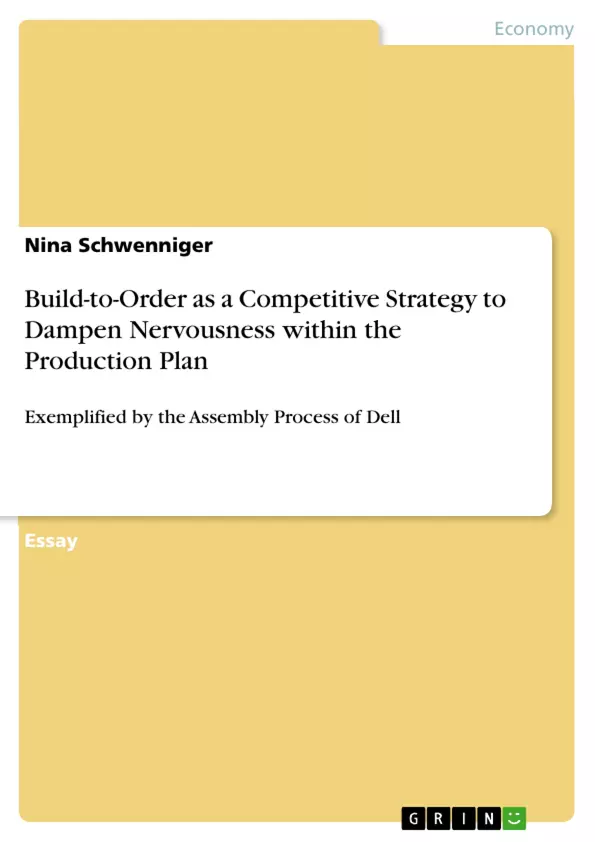In times of globalization and increasing product complexity and variety due to sophisticated customer demand, new priorities for production planning must be set. The observable trend from supply-driven to demand-driven production will continue forcing more and more manufacturers to revise their production concept.
A possible approach to face this challenge is the pull-based Build-to-Order (BTO) system. In terms of production planning, it will be indispensable to integrate the entire process chain. Nervousness is largely caused by external parties such as the supplier and the customer. Therefore, integrated approaches with focus on the customer will gain in importance and become the dominant cross-industrial mode of production.
In this paper Build-to-Order is analyzed and evaluated as a specific solution approach by focusing on how it dampens nervousness within the production plan. Broadly speaking, nervousness within the production process can be caused by demand variability (downstream) and supply difficulties (upstream). In this seminar paper Dell serves as an example to illustrate BTO's effect on nervousness reduction.
Inhaltsverzeichnis (Table of Contents)
- Demand-driven production and supply chain operations
- Mass Customization
- Build-to-Order as a competitive strategy
- Dell Inc. as an example of BTO
- Nervousness reduction through Build-to-Order
Zielsetzung und Themenschwerpunkte (Objectives and Key Themes)
This seminar paper analyzes the Build-to-Order (BTO) system as a competitive strategy to address the challenges of demand-driven production and supply chain operations in a globalized market. It examines how BTO can dampen nervousness within the production plan by reducing the impact of demand variability and supply difficulties.
- Demand-driven production
- Build-to-Order as a competitive strategy
- Nervousness within production plans
- Mass Customization
- Dell Inc. as an example of BTO implementation
Zusammenfassung der Kapitel (Chapter Summaries)
The paper begins by outlining the challenges of demand-driven production in today's globalized manufacturing environment, highlighting the increasing complexity and volatility of planning scenarios. It then introduces Mass Customization and Build-to-Order as key concepts for addressing these challenges, emphasizing BTO's ability to deliver customized products at the price of standard products. The paper contrasts BTO with Build-to-Stock (BTS) and Assembly-to-Order (ATO) production models. It emphasizes the role of customer integration in BTO and its potential for successful differentiation in the marketplace. The paper highlights the benefits of BTO in reducing forecasting errors, inventory costs, and lead-time delays, making operations agile and flexible. The paper discusses Dell Inc. as a successful example of BTO implementation, outlining its approach to customer order configuration, component availability checks, and production processes. It examines Dell's supplier network, its strategies for managing supply difficulties, and its efforts to reduce material bottlenecks.
Schlüsselwörter (Keywords)
Nervousness, Build-to-Order (BTO), rejects, modularization, supplier network, Mass Customization, Dell, demand-driven production, supply chain operations.
- Quote paper
- Nina Schwenniger (Author), 2014, Build-to-Order as a Competitive Strategy to Dampen Nervousness within the Production Plan, Munich, GRIN Verlag, https://www.grin.com/document/300641



